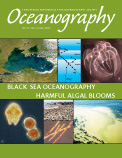First Paragraph
Marine ecosystems respond to climate changes at all trophic levels, from primary producers to herbivores to higher predators, in terms of growth, life history traits, and population dynamics (Stensth et al., 2002). Temperature variations directly affect metabolic rates. Anomalies in precipitation, solar radiation, heat flux, and wind stress fields influence circulation, water column stratification, vertical mixing, and upwelling and downwelling characteristics. These physical processes then lead to changes in nutrient cycling, primary production, and predator-prey interactions. For example, unfavorable climate conditions in the northeastern Atlantic due to intensification of the winter circulation observed during the last decades have resulted in a significant decrease in the abundance of the copepod Calanus finmarchicus at the expense of an increase in C. helgolandicus abundance (Fromentin and Planque, 1996). During El Niño years, weakening upwelling in the central and eastern Pacific, followed by warming of surface waters and increased water-column stratification, inhibited nutrient supply and modified the planktonic food web structure by decreasing primary production, zooplankton abundance, and larval fish productivity. By contrast, the La Niña event gave rise to a more-intense-than-usual upwelling of cold deep waters leading to opposite effects on ecosystem structure. In some cases, climatic effects may be so severe that the resulting anomalous hydrographic events may cause pronounced biological shifts between ecosystem states (e.g., de Young et al., 2004).

